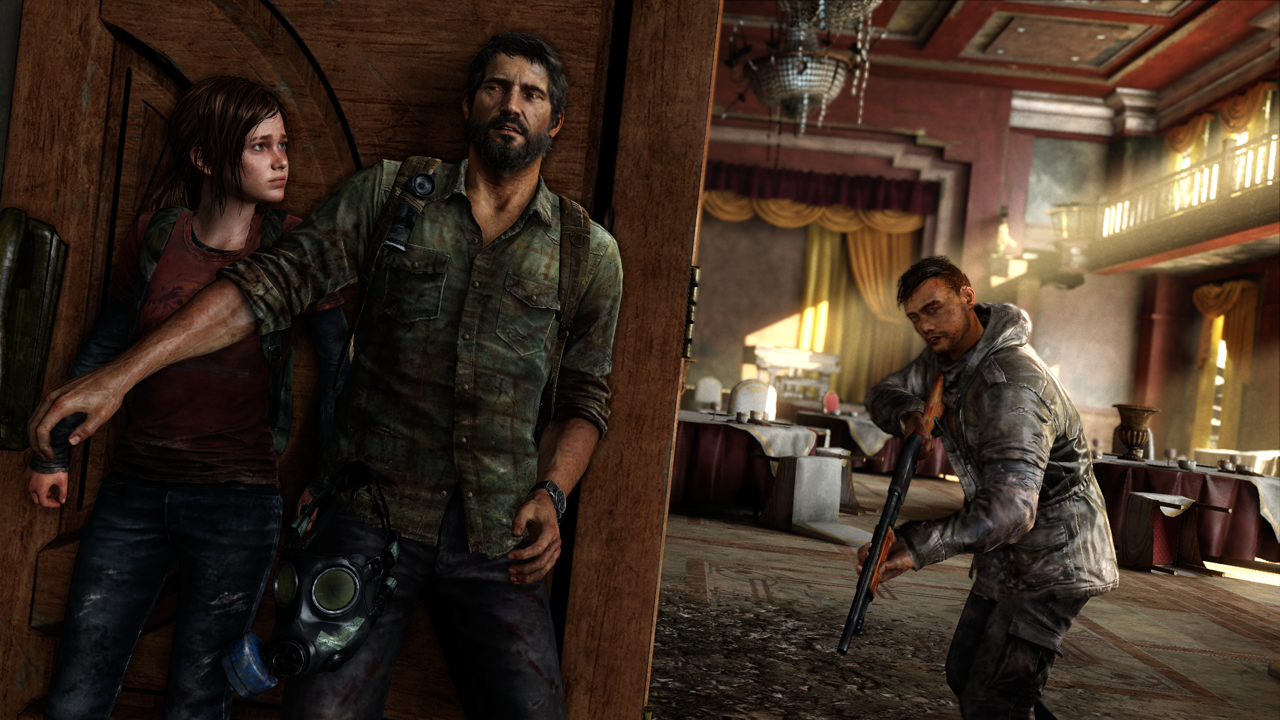In the year 2013, a parasitical fungus known as Cordyceps (yes, that’s a real thing and it takes control of several species of arthropods), begins to infect humans, taking control of their brains and causing them to attack other humans. When these infected humans are on the verge death, they release spores that, when inhaled, spread the infection, and in a span of one night the world is plunged into anarchy.
Fast-forward twenty years later and majority of the earth’s population has been wiped out. Most survivors are either living in oppressive quarantine zones or have become hunters, groups that ambush and prey on other humans. Food and resources have become scarce, the infected continue to plague the world, and it seems as though humanity has no other choice but to adopt to a life of fear.
It’s nothing drastically different from any post-zombie apocalypse scenario, but the zombie theme only serves as a backdrop for The Last of Us, the latest offering from critically acclaimed game developers Naughty Dog, makers of the Uncharted, Jak and Daxter, and Crash Bandicoot series.
The Last of Us is a character-driven game. Joel, a middle-aged smuggler, and Ellie, a fourteen-year-old girl (an extremely likeable one at that), travel across an American wasteland devoid of any signs of humanity. There are other humans, to be sure, but the dire conditions have made monsters of them, sometimes portraying them to be the real monsters of this game.
Joel and Ellie’s relationship blossoms throughout the game and is sure to elicit the empathy of most gamers. The way this is fleshed out showcases what the medium is capable of in terms of storytelling. The game doesn’t just rely on its beautifully done cut-scenes, but also on the moments which are played. Throughout the fight sequences, I felt a growing sense of responsibility over Ellie, that she was a real human being who could live or die. It also helped she wasn’t just a damsel in distress; I found myself saved by her on several occasions where I was too busy reloading. By the time I reached the final chapters of the game, I felt nervous whenever I was away from her even for a few moments.
The optional dialogues interspersed throughout the exploration segments of the game emphasize the fact that Ellie did not live in a world without the infected and sometimes she provides biting commentary on our world. It’s this and discovering empty playrooms where children might have once played; little notes and diaries from people who eventually fell victim; that really create a sense of immersion.
The gameplay mechanics are somewhat similar to The Uncharted series. It’s a third-person shooter with a functional cover system, but with added elements of survival horror. The game provides a limited supply of ammunition and the player at times is forced to either use stealth or even run-away. Mobility is important and the controls are suitably fluid.
Repetitiveness isn’t too much of a concern as the weapons and enemy types add variety to the game and forces you to adjust accordingly. Some zombies, for example, react to sound and are almost impossible to beat in numbers, so you might throw a bottle to the opposite side of the room to detract their attention or use a silent bow to kill them, while human enemies will often try to flank you if you spend too much time in any one position. Trying out different play styles on the four difficulty levels (which can also be played in a new game+ mode) gives the game replayability.
It’s also a visually stunning game. The superb lighting adds to the world’s quasi-dark atmosphere, and the aesthetically-pleasing scenery shows us a world where nature has retaken what humanity took from it. It might be pushing the limits of what the PlayStation 3 is graphically capable of.
The story is also complemented by its soundtrack, composed entirely by Academy Award-winning composer Gustavo Santaolalla. Simplicity is the theme here, and the subtle and minimalist approach, often just an acoustic guitar, works well with the game.
Overall, these aspects add up to make an emotionally visceral game that is truly immersive. The riveting story and characters will draw you in from start to finish. It is simply a breathtaking and emotionally evoking experience that will have you taking deep breaths to calm yourself down, wiping tears off your eyes, and taking certain actions in-game out of anger.
There are some games that reaffirm the reasons we play videogames, and The Last of Us is one of them.
Grade: 4.0

